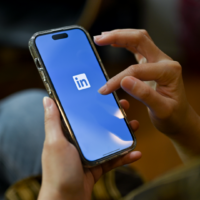Pinning Down Pinterest for PR
Co-written by Ashley Shafer and Ani Araya
If only Pinterest would have included a caveat that read something like:
WARNING: Side effects may include loss of hours and productivity, incessant research of new dinner recipes and unabashed gawking at photographs of adorable babies dressed in absurd Halloween costumes (have you seen the Frappuccino girl?).
Pinterest is picture paradise, and if you are not careful, the social media site will become your new addiction.
Unfortunately, Pinterest does not come with a caution sign (unless, of course, you pin it). The only thing left to do is to find a way to use it effectively, without losing your soul.
Luckily for public relations folk, Pinterest has developed into a PR tool, reaching vast, pin-hungry audiences that may be relevant to appropriate clients.
Here are some helpful tips for PR professionals using Pinterest on behalf of clients:
- Keep it simple and focused: Categorize pin boards to one theme and pin appropriate photos that represent the theme. The amount of photos on Pinterest can be overwhelming, so it is important to stay consistent. Don’t confuse your audience by pinning unnecessary or random photos that have nothing to do with the theme of the pin board.
- Incorporate fun contests: Create fun photo contests by allowing public access to one board focused on a particular contest idea. Followers can pin their own photos onto the board and the follower who pins the most creative photo wins the contest and a prize.
- Pins and pitching: Some of the most followed Pinterest accounts are those of national magazines. When pitching media for a story, take the time to acknowledge their boards and pins, when applicable, by tweeting or sharing their pins on Twitter or Facebook. A little (sincere!) flattery never hurts.
- Be sure to acknowledge sources: Cite, cite and cite. This may not be an essay for English class, but acknowledging the original source for pictures pinned is critical. If you use the “Pin it” button that can be downloaded to your browser, you can pin items directly from a client’s site – which will then link people back to that site in one easy click. If you are uploading your own photos, you can attach your client’s URL as a citation, drawing viewers back to its website.
Lastly, not every client is going to be a perfect fit for Pinterest. Some professionals are saying that Pinterest is only a fad (read one professional’s cynical opinion in the recent issue of Direct Marketing). No matter what your opinion is regarding the sustainability of the site, understand that using Pinterest effectively requires a sizable time commitment (as all social media efforts do) – and researching whether it’s the best strategy and use of your client’s resources is key.
To determine if a client is a good fit, consider what audience they are serving (83 percent of American Pinterest users are female and most are 35 to 44 years old, according to this infographic). Also, consider the number of quality photos you have available, and if there are enough of those photos to continue populating a board for months, or even years, to come.
Happy pinning!



